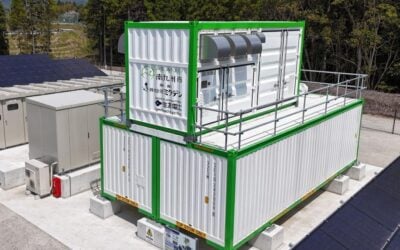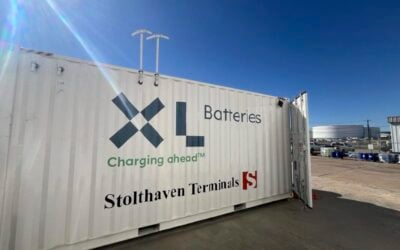The company already has a "multi-megawatt testing, demonstration and validation" facility. Image: Lockheed Martin.
Lockheed Martin has told Energy-Storage.News that while the company wants its energy storage systems to support the adoption of renewable energy, its recently launched lithium-ion devices will focus on “commercial applications”.
The engineering giant, which has business areas including defence and aerospace, is also developing a flow battery-based system, Gridstar Flow. Richard Brody, director of sales and marketing for Lockheed Martin Energy, said that Gridstar Lithium-ion will address very different applications to the flow battery.
Enjoy 12 months of exclusive analysis
- Regular insight and analysis of the industry’s biggest developments
- In-depth interviews with the industry’s leading figures
- Annual digital subscription to the PV Tech Power journal
- Discounts on Solar Media’s portfolio of events, in-person and virtual
“We view each of these technologies as being applicable to our customers’ different energy storage needs,” Brody said, confirming that Gridstar lithium-ion is aimed at short duration, high power applications for commercial and industrial (C&I) and utility-scale projects which could include frequency regulation to balance the grid, while Gridstar Flow is more suited to long duration applications, as might be expected.
“Right now, our efforts in energy storage are mostly focused on commercial applications. Renewable solar and wind power are providing more energy than ever to the grid and the growth of these technologies is expected to continue,” Brody said.
'Investing in long-term solutions now'
According to Brody, while it may not have the most commercial impetus at present, allowing for further integration of renewables into electricity networks is a key long-term aim of the energy storage business, in addition to making the grid more stable.
“Our goal is not only to make the grid more efficient and stable – but also to enable the increased use of renewables, which will only continue to grow,” Brody said.
“We are investing in long-term solutions now, and will continue to develop new systems that will adapt to our customers’ energy storage needs.”
Over just the past few weeks, several major companies have signalled their intent to take a bigger share of the energy storage market as a whole. Engie bought 80% of Green Charge Networks, Total is set to buy Saft for more than US$1 billion and storage companies including Sonnen and Stem have attracted investment from engineering and utility majors such as GE and RWE. Lockheed’s Richard Brody was keen to tout Lockheed’s supposed suitability to tackle the market.
“We feel we are uniquely positioned to offer energy storage solutions due to our key strengths in technology innovation and our world-class systems integration capability, leveraging decades of delivering mission-critical systems,” highlighting that Lockheed’s energy storage programme was partly developed through working with the US armed forces and government on the design and deployment of microgrids.
This article has been amended to reflect that Lockheed Martin's Gridstar Flow system is still in development and is not vanadium-based, as was originally reported.
Lockheed's Richard Brody highlighted the role the company has already played in providing "mission critical" systems to military and government operations in the field. Image: Lockheed Martin.






